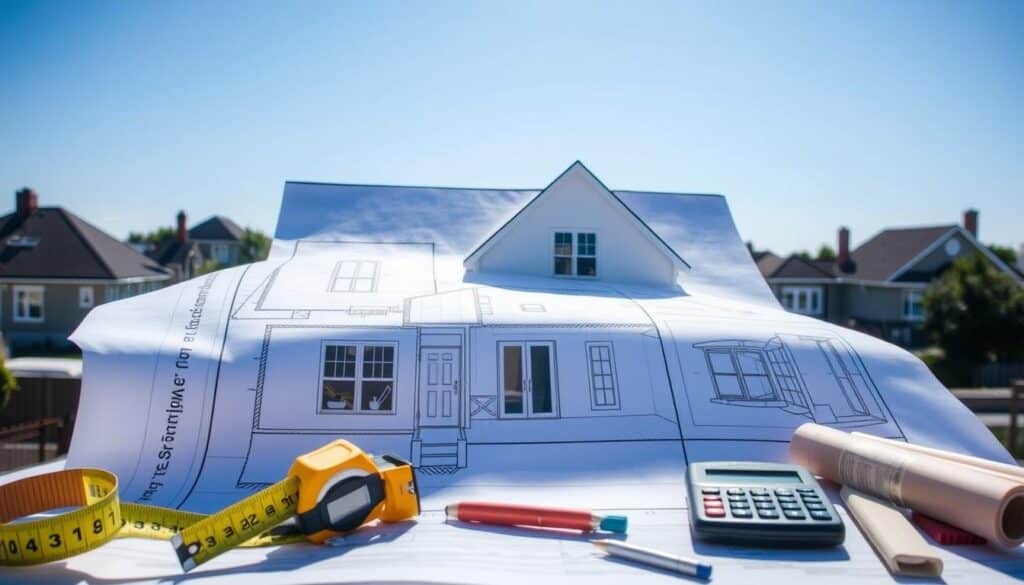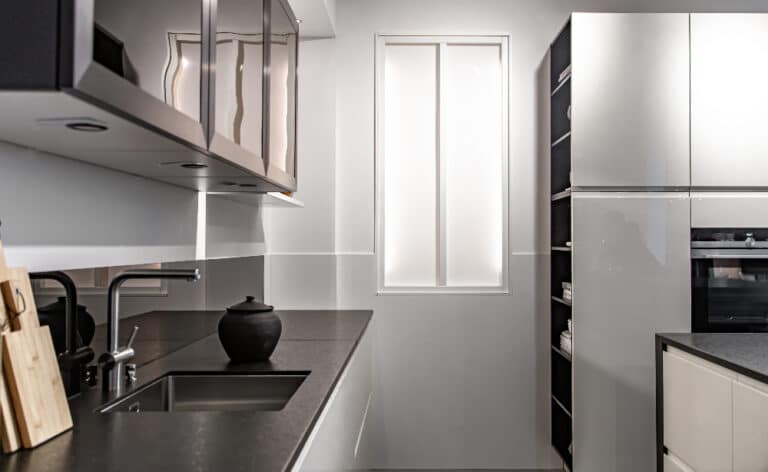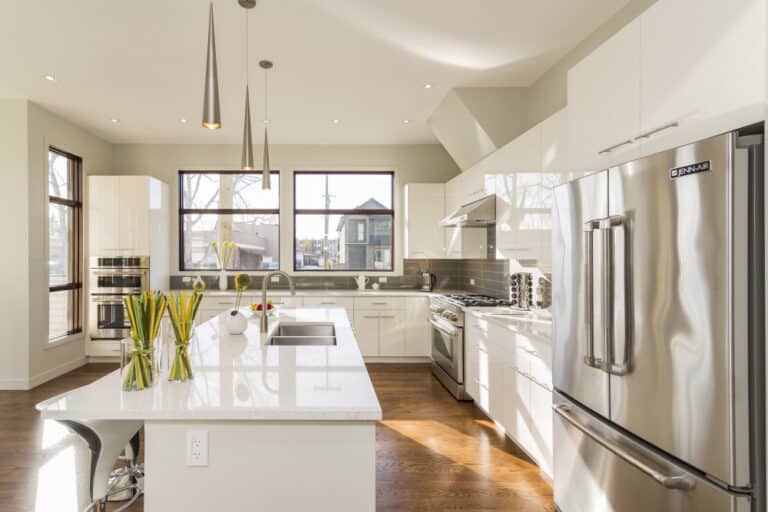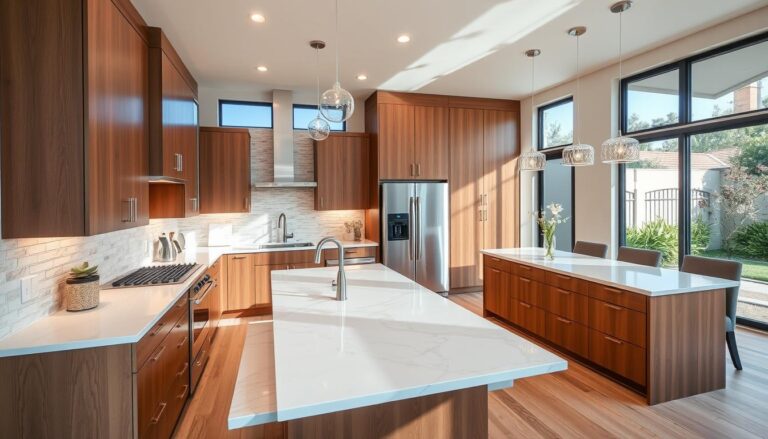Thinking about adding a room to your home? Maybe you want more space, a home office, or an extra bedroom. The cost is a big thing to think about. In this guide, we’ll look at what makes Room addition costs go up, how to budget, and ways to save money.

Key Takeaways
- The cost of a room addition can vary a lot. This depends on the size, materials, and who does the work.
- Knowing what adds to the cost can help you plan your budget better.
- Looking for ways to save, like doing it yourself or choosing cheaper materials, can help keep costs down.
- Getting quotes from different contractors can help you find the best deal.
- Good planning and budgeting can help avoid surprises and keep your project on track.
The Basics of Room Addition Costs
Understanding room addition costs is key. The size, complexity, materials, and location of your home all play a role. These factors can change the final cost.
Understanding Square Footage Pricing
The size of your room addition is a big factor. Prices per square foot range from $100 to $500. This depends on the finishes and project complexity.
For example, a 400-square-foot addition could cost between $40,000 and $200,000. This is based on the materials and construction needed.
Factors that Influence Room Addition Expenses
Several factors can also affect the cost:
- Complexity of the construction – Intricate designs, like vaulted ceilings, cost more than simple additions.
- Quality of materials – The materials used, from flooring to cabinetry, greatly impact the price.
- Location of your home – Homes in expensive areas or remote spots may have higher costs.
- Site conditions – The terrain, accessibility, and existing structure can also affect the cost.
Knowing these factors helps you budget better. This ensures your investment meets your goals.

How Much Does a Room Addition Cost?
Figuring out how much a room addition costs is tricky. Prices vary a lot because of different factors. Let’s look at the average costs and what can make prices go up or down.
The average cost for a room addition in the U.S. is about $50,000 to $100,000. This includes the size, materials, and how complex it is.
A basic room addition can cost $20,000 to $40,000. But, a luxury room addition with fancy finishes can cost over $150,000.
In California, the cost for a room addition is often higher. This is because of labor costs, permits, and local rules. Expect to pay $60,000 to $150,000 for a typical project.

The cost of a home extension or room expansion depends on many things. These include the size, design, materials, and where your home is. It’s key to talk to a trusted contractor to get a good estimate for your project.
Breaking Down the Room Addition Budget
Understanding the costs of a room addition is key to a good budget. We’ll explore the costs of materials and labor for this home expansion.
Material Costs for Room Additions
The cost of materials for a room addition varies. It depends on the size, complexity, and features of the new space. Important factors include the cost of building materials like lumber, drywall, and windows. Also, the price of fixtures, finishes, and specialized equipment or systems matters.
For a typical room construction costs in the United States, material expenses can range from $50 to $150 per square foot.
Labor Costs for Room Additions
Labor costs for a room addition are also significant. They include the fees for skilled tradespeople like carpenters and electricians. Plus, there are costs for permits and inspections. Depending on the project’s complexity and the local room addition cost in california, labor costs can range from $50 to $150 per square foot.
Knowing these cost drivers helps you make a detailed budget. This ensures you have enough money for your home expansion costs and residential addition expenses. It helps avoid surprises during construction.
“Careful budgeting and cost management are essential for a successful room addition project.”
Cost-Saving Tips for Room Additions
Home remodeling and room construction can get expensive. But, with smart planning, you can save money. One big choice is whether to do it yourself or hire a contractor.
DIY vs. Hiring a Professional
Doing it yourself can save money if you have the right skills and tools. This way, you can cut down on costs. But, make sure you can handle the project’s complexity.
Hiring a contractor might cost more upfront. Yet, it saves time and ensures quality. They also know the permitting process well and can help stretch your budget.
Choosing between DIY and hiring a contractor depends on your skills and comfort. Think about the risks and benefits to decide what’s best for your budget.
Planning carefully and exploring options are key to affordable room additions. By making smart choices, you can achieve your dream without overspending.
Conclusion
The cost of adding a room can change a lot. It depends on the project’s size, complexity, materials, and labor. Knowing these details helps you plan and budget for your home better.
Adding a room can make your home bigger, more valuable, or a special place. This article has given you key insights. You now understand the costs better, from square footage to saving money.
With good planning and looking for ways to save, your room addition can happen. Use the info on how much does a room addition cost, room addition prices, and more. This will help you make smart choices and have a great home improvement journey.
FAQ
How much does a room addition typically cost?
The cost of adding a room can change a lot. It depends on the room’s size, how complex it is, the materials used, and where your house is. On average, expect to pay between $100 to $500 per square foot.
What factors influence the cost of a room addition?
Several things can change the cost of adding a room. The room’s size and how complex it is matter a lot. So does the quality of materials and where your house is. These all affect the cost.
How can I save money on a room addition project?
There are ways to save on a room addition. You could try doing some parts yourself if you can. Choose cheaper materials but still good quality. Get quotes from different contractors to find the best price.
Look for design ideas that don’t need big changes. Building during the off-season can also save you money because labor costs are lower.
Should I hire a professional contractor or take a DIY approach?
Whether to hire a contractor or do it yourself depends on your skills and the project’s complexity. DIY can save money but is riskier and takes more time. A contractor ensures it’s done right and safely, but costs more.
Think about your skills and the project’s size to decide what’s best for you.
How long does a room addition project typically take?
The time it takes to add a room varies. It depends on the room’s size, complexity, and when you can get materials and labor. Usually, it takes 2 to 6 months, longer for bigger or more complex projects.
Remember to plan for the time it takes when budgeting and arranging your life during construction.




